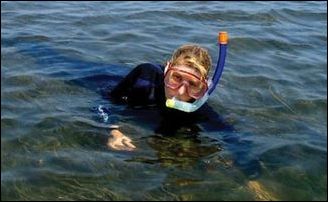Karen McGlathery, an environmental sciences professor at the University of Virginia who runs the Virginia Coastal Reserve Long Term Ecological Research program, is particularly taken with the study of marshes and wetlands.
Over the past century, worldwide sea levels have risen seven inches over the past century, and even faster in the Virginia Tidewater where subsidence has accelerated the rise. As noted in the new edition of “Virginia,” the UVa alumni magazine, marshes, barrier islands and oyster reefs are humans’ first line of defense against hurricanes and other violent storms.
“We know that, for millennia, marshes have kept pace with rising and falling sea levels as glaciers formed and melted,” McGlathery says. Marshes depend upon sediment flowing into the Chesapeake Bay and its tributaries to keep up with rising waters. But human activities such as dam building and shoreline hardening could change that dynamic. If the replenishment of sediment is blocked, the marshes could die as water levels rise.
But there is good news. Says McGlathery: “One thing that we’ve learned is that in Virginia, on the Eastern Shore, many of the marshes are doing very well — they have the capacity to keep up with the current rising seas.”
Bacon’s bottom line: If Virginians are going to think seriously about resilience in the face of recurrent flooding and inundation, we need to better understand the fundamentals of how wetlands adapt to rising sea levels. On the one hand, higher levels of sediment from eroding rivers and streams creates a problem for Chesapeake Bay ecosystems, and is considered to be bad thing. Strict and expensive storm-water management regulations going into effect in Virginia is aimed at cleaning up the Bay. But, ironically, sediment in the right places — in threatened marshlands — can help Bay ecosystems adapt to rising sea levels. Is it possible that there is “good” sediment and “bad” sediment? We may need to adopt a more nuanced approach toward sediment. McGlathery’s work will prove invaluable.
— JAB



